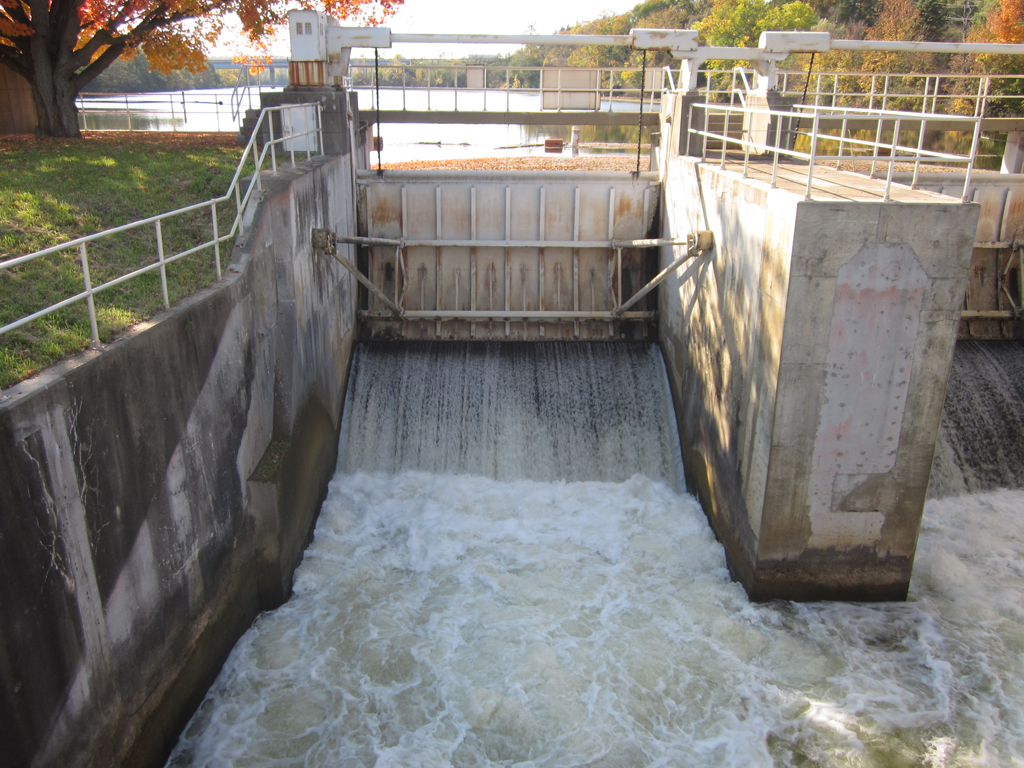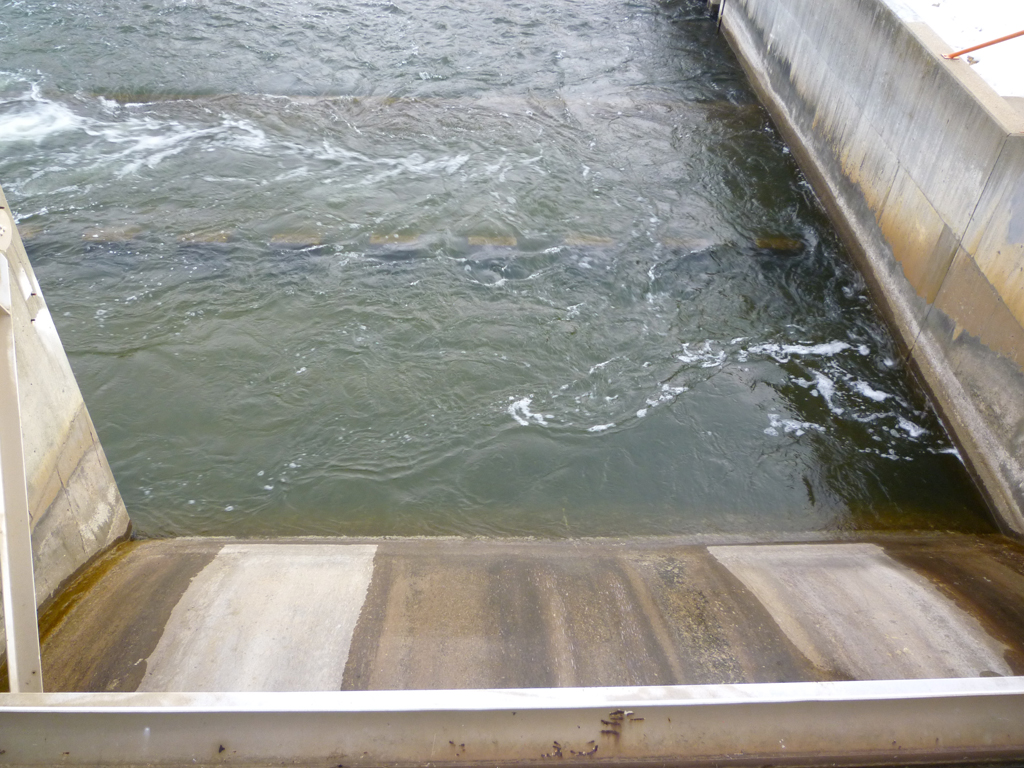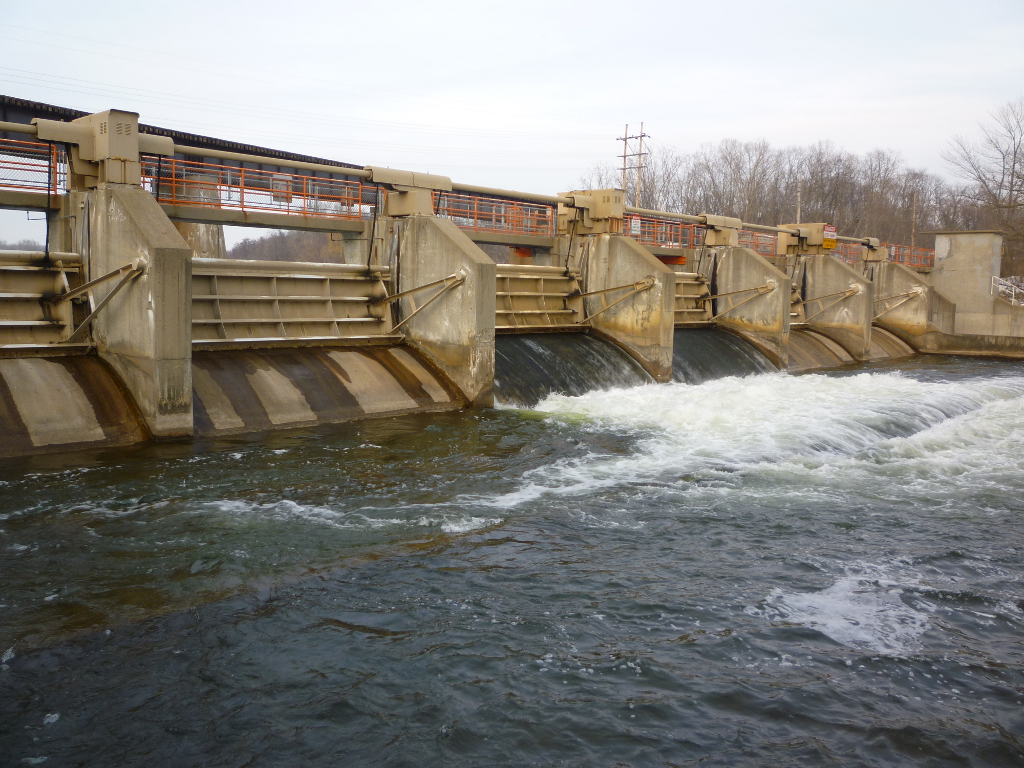
Photo Credit: Karl Jansen
This is a vertical rising sluice gate, which means that a piece of machinery is used to adjust the height of the gate. By adjusting this height, the sluice gate is able to control the water. In general, sluice gates are used to control the level and flow rate of water in a river. When the gate is fully lowered, water could spill over the top of the gate which has the same effect as a weir. Sluice gates are a powerful tool used by engineers to control water in a river, which is especially critical during a time of flooding.

